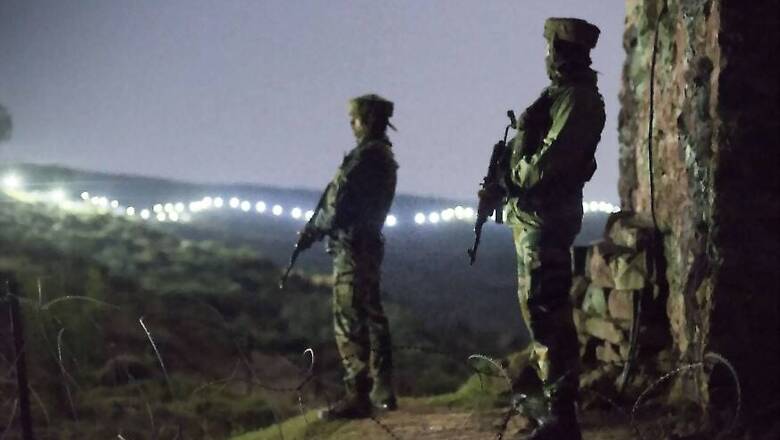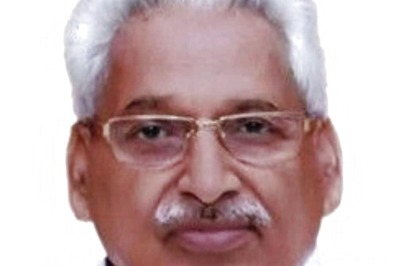
views
Our political masters fear liberalisation, regarding it an expensive affair — that is, expensive in electoral terms. But the cost of not carrying out reforms is even higher, not just for politicians but also for the nation, undermining even its security. Inadequate allocation for defence in Budget 2019-20 is a testimony to the dangers arising out of unreformed economy.
Finance Minister Nirmala Sitharaman allocated Rs 318,931.22 crore for defence of which Rs 210,682.42 crore is for revenue expenditure and Rs 108,248.8 crore for capital expenditure. This is 7.93 per cent more than Budget Estimates (295,511.41 crore) and 6.87 per cent over Revised Estimates (Rs 298,418.72 crore), respectively, for 2018-19.
The high revenue expenditure is on account of salaries and pensions. The cost of pay, allowances, and pensions has grown from 45 per cent to 56 per cent of the defence budget in the last four years.
But the bigger worry is that the total defence budget as a percentage of the gross domestic product (GDP) has been falling consistently. It has come down from 2.33 per cent in 2016-17 to 2.04 per cent this fiscal. Thankfully, Sitharaman has exempted the import of defence equipment from the basic customs duty. This would help but not much.
On the face of it, this is incomprehensible, for here is a government that claims to lay great emphasis on national security; it is accused of pursuing a policy of ‘muscular nationalism,’ of being jingoistic, and so on. Yet, it couldn’t find money for the institution, the military, which its leaders glorify zealously. And that too at a time when Pakistan and China, the countries we have fought wars with, remain as hostile as ever.
Commenting on the defence allocation, Laxman K Behera, Research Fellow at the publicly-funded Institute for Defence Studies and Analyses, wrote: “The Indian armed forces are currently in the midst of a huge modernisation process. However, owing to the resource crunch, their ability to pay for it has come under a great deal of stress. The resource crunch has been so intense that they are finding it difficult to even pay for the past contracts. In 2018-19, as against a requirement of Rs 110,044 crore to meet the committed liabilities, the total budget (including for New Schemes) was Rs 74,116 crore. If the requirement of the New Schemes is added, the shortfall on modernisation front was a staggering Rs 67,363 crore or 48 per cent.”
This is despite the Finance Minister saying in her Budget speech, “Defence has an immediate requirement of modernisation and upgradation (sic). This is a national priority.”
The resource crunch has been there for quite some time. For instance, Army vice-chief Lt-General Sarath Chand told the parliamentary committee on defence last year, “The 2018-2019 budget has dashed our hopes ... The marginal increase barely accounts for inflation and does not even cater for taxes.”
It needs to be mentioned here that had the government been under a Congress-led coalition today, it would not have come out with a defence allocation much different from what the Narendra Modi regime has provided for. For there are different political parties but they all have faith in the same politic-economic narrative; they are all committed to statism and they all make the same mistakes when in power.
Consider this: the government couldn’t provide Rs 67,363 crore for military modernisation, but it earmarked Rs 70,000 crore for public sector banks (PSBs). Denationalisation of PSBs would have saved that amount, given a fillip to lending, thus boosting the economy and creating more jobs. But the Budget favoured recapitalisation: “To further improve ease of living, they [PSBs] will leverage technology, offering online personal loans and doorstep banking, and enabling customers…”
This is apart from the lakhs of crores that states have wasted on farm loan waivers, which do little to take care of rural distress. Minister of State for Agriculture & Farmers Welfare Parshottam Rupala recently informed Lok Sabha that farmer suicides increased even after the loan waiver of Rs 75,000 crore by the United Progressive Alliance government in 2008. Last month, the Maharashtra government also accepted that loan waivers have failed to stop farmer suicides.
The point to be underlined here is that the economic policies arising out of statism and populism are extremely perilous. Statism and populism are like diabetes of the body-politic as well as body-economic; just as diabetes gradually destroys all vital organs, they undermine all parts and institutions of the state. Evidently, statism and populism are badly hurting national security. And not only the government but the entire political class is helplessly watching.
This is the cost of not carrying out economic reforms.
(The author is a freelance journalist. Views expressed are personal)


















Comments
0 comment